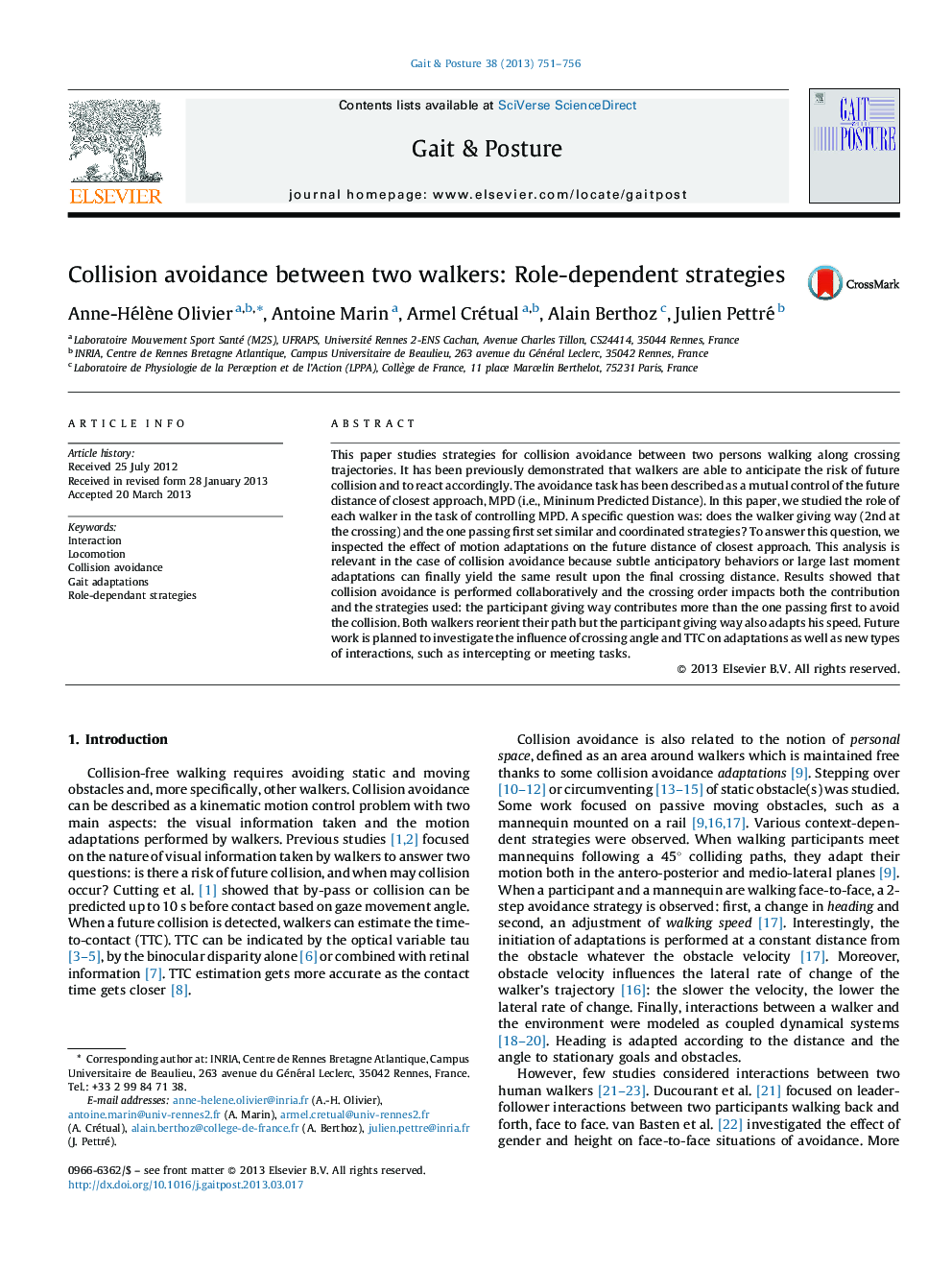| کد مقاله | کد نشریه | سال انتشار | مقاله انگلیسی | نسخه تمام متن |
|---|---|---|---|---|
| 6206742 | 1265652 | 2013 | 6 صفحه PDF | دانلود رایگان |
- We experimentally studied collision avoidance between two walkers.
- We measured the nature and the quantity of adaptations that each walker made to their locomotion trajectories during avoidance.
- We analyzed the effect of motion adaptations on the situation of interaction.
- Walkers have role dependent adaptations: both reorient their path whilst the walker giving way decelerates in addition.
This paper studies strategies for collision avoidance between two persons walking along crossing trajectories. It has been previously demonstrated that walkers are able to anticipate the risk of future collision and to react accordingly. The avoidance task has been described as a mutual control of the future distance of closest approach, MPD (i.e., Mininum Predicted Distance). In this paper, we studied the role of each walker in the task of controlling MPD. A specific question was: does the walker giving way (2nd at the crossing) and the one passing first set similar and coordinated strategies? To answer this question, we inspected the effect of motion adaptations on the future distance of closest approach. This analysis is relevant in the case of collision avoidance because subtle anticipatory behaviors or large last moment adaptations can finally yield the same result upon the final crossing distance. Results showed that collision avoidance is performed collaboratively and the crossing order impacts both the contribution and the strategies used: the participant giving way contributes more than the one passing first to avoid the collision. Both walkers reorient their path but the participant giving way also adapts his speed. Future work is planned to investigate the influence of crossing angle and TTC on adaptations as well as new types of interactions, such as intercepting or meeting tasks.
Journal: Gait & Posture - Volume 38, Issue 4, September 2013, Pages 751-756
